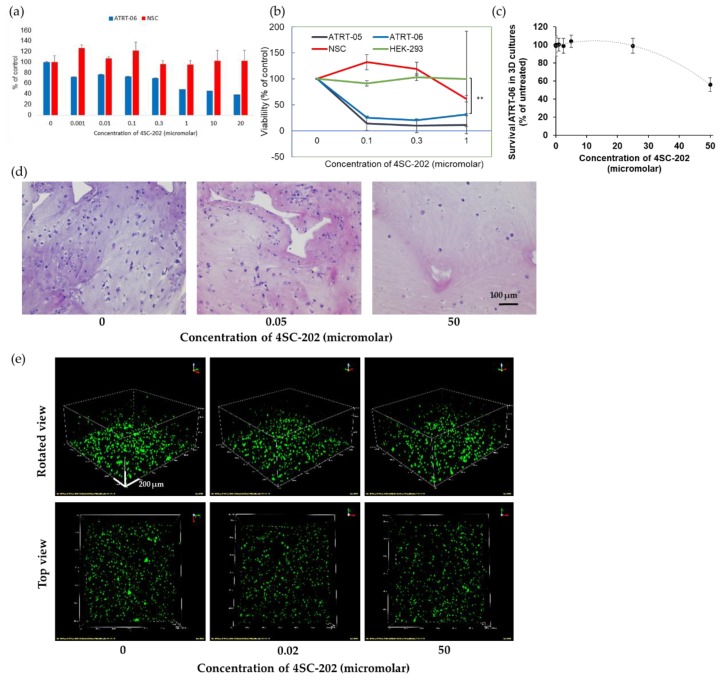Figure 2.
4SC-202 is significantly cytotoxic and cytostatic to ATRT in 2D and 3D cell culture models. (a) Sytox Green proliferation assays indicate that 4SC-202 significantly reduces live cells in ATRT-06 at concentrations ranging from 0–20 µM as compared to a control neural stem cell (NSC) line. (b) Luminescence viability assays (Promega) indicate 4SC-202 significantly reduces viability in 2 separate ATRT cells lines-ATRT-06 and ATRT-05 at concentrations ranging from 0–1 micromolar but does not affect viability of non-cancerous cell lines NSC and HEK-293. A two-tail paired t-test indicates that at 1 µM 4SC-202 treatment, there is a significant difference in viability between ATRT-06 as compared to HEK-293, p < 0.001 (**), and other significant differences between ATRT cell lines as compared to controls noted in text. (c) 4SC-202 reduces survival of ATRT-06 in 3-dimensional scaffold model. (d) H&E confirm a dose-dependent reduction in proliferation, at concentrations ranging from 0–50 µM with the fewest cells visible following 50 µM 4SC-202. Scale bar = 100 μm (e) Representative confocal microscopy images of rotated and top views of ATRT-06 cell line (DiO, green) in 3D matrices on day 3 at concentrations ranging from 0–50 µM. Scale bar = 200 μm.

